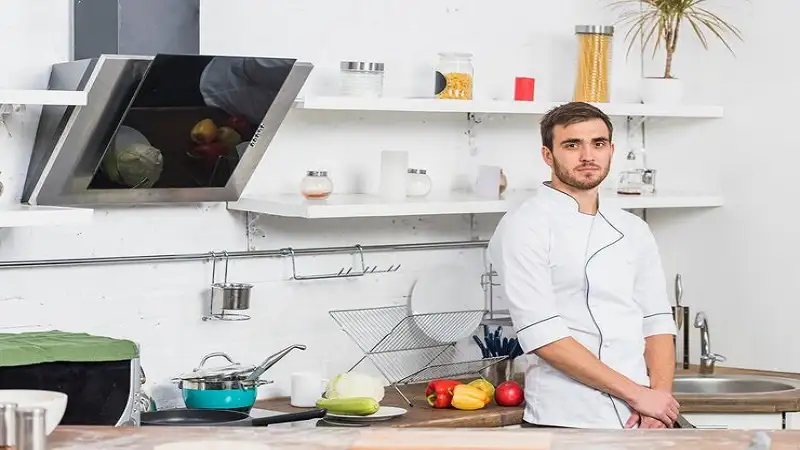The Kitchen:brkbwmd6kes= Turner may seem like a simple tool, but it’s a versatile essential in every chef’s toolkit. From flipping pancakes to lifting delicate fish fillets, the right turner can make a big difference in your cooking experience. If you’ve ever wondered why some turners work better for certain dishes or how to choose the perfect one, this guide is here to help.
What is a Kitchen Turner?
A Kitchen:brkbwmd6kes= Turner often called a spatula or flipper, is a flat, broad utensil used for flipping, lifting, and serving foods. It generally has a handle for grip and a broad, thin edge that can slide under foods easily. There are many different types, each suited to different culinary needs.
Types of Kitchen Turners
Metal Turners
Metal Kitchen:brkbwmd6kes= Turner are strong, durable, and excellent for tasks that require a firm grip. However, they are not recommended for non-stick cookware, as they can scratch the surface.
Silicone Turners
Silicone turners are heat-resistant and safe for all cookware, especially non-stick. They’re flexible, which makes them ideal for flipping delicate foods like eggs or pancakes.
Plastic Turners
Plastic Kitchen:brkbwmd6kes= Turner are lightweight and affordable but may not be suitable for high-heat cooking. They are a budget-friendly choice for everyday tasks.
Wooden Turners
Wooden turners are gentle on cookware and eco-friendly. However, they may not be as flexible or heat-resistant as silicone or metal options.
Key Features to Look for in a Kitchen Turner
Choosing a quality turner involves looking at a few key factors:
- Material Quality: Durable materials, like stainless steel or high-grade silicone, last longer.
- Heat Resistance: Essential for high-heat cooking without warping or melting.
- Handle Design and Comfort: A good grip can make flipping easier and safer.
- Edge Shape and Flexibility: Thin edges are great for sliding under delicate foods.
Top Uses of a Kitchen Turner
A kitchen turner is a multifunctional tool with many uses:
- Flipping: Perfect for flipping burgers, pancakes, or fish.
- Serving: Ideal for serving foods like lasagna or casserole.
- Scooping and Lifting: Helpful for lifting foods from a hot pan without breaking them apart.
Choosing the Right Turner for Your Cooking Style
When selecting a Kitchen:brkbwmd6kes= Turner, consider your cooking habits. For example, metal turners are great for grilling but might scratch non-stick pans. Silicone turners, on the other hand, work well with delicate foods and won’t damage your cookware.
How to Use a Kitchen Turner Like a Pro
Using a kitchen turner may seem straightforward, but a few techniques can enhance your cooking:
- Flipping Delicate Items: Use a flexible, thin-edged turner for fragile items.
- Avoid Sticking: Lightly oil your turner or pan to prevent foods from sticking.
- Preserve Non-Stick Coatings: Use silicone or plastic turners on non-stick surfaces.
Caring for Your Kitchen Turner
To keep your turner in good condition, follow these care tips:
- Cleaning: Wash immediately after use, especially with silicone or wood, to prevent stains.
- Maintenance: Avoid high-heat exposure for plastic turners.
- Replacement: Replace when signs of wear appear, like melting or fraying.
Popular Brands and Recommended Products
There are many trusted brands for kitchen turners, including OXO, T-fal, and Cuisinart. Prices vary, with silicone and plastic options generally being more affordable than high-quality stainless steel models.
Advantages of Using a Quality Kitchen Turner
Investing in a quality Kitchen:brkbwmd6kes= Turner offers many benefits:
- Durability: Lasts longer without breaking or melting.
- Enhanced Cooking Experience: Makes flipping and serving easier.
- Safety: Heat-resistant materials prevent burns or warping.
Common Mistakes to Avoid with Kitchen Turners
Some common pitfalls include using metal turners on non-stick surfaces, which can damage them, or using turners that are too thick for delicate foods. Always match the turner to the task and cookware.
Eco-Friendly Kitchen Turner Options
For environmentally conscious chefs, wooden or bamboo turners are excellent choices. They’re biodegradable, durable, and safe for all types of cookware.
DIY Kitchen Turner Storage and Organization Ideas
Keep your Kitchen:brkbwmd6kes= Turner organized by storing them in utensil holders or wall-mounted racks. This prevents them from bending and keeps them accessible when cooking.
Where to Buy the Best Kitchen Turners
Kitchen turners are available at most home goods stores and online retailers like Amazon, Walmart, and specialty cooking websites. Look for reviews to find high-quality options within your budget.
Conclusion
A Kitchen:brkbwmd6kes= Turner is a small but mighty tool that deserves a spot in every kitchen. By selecting the right type, you’ll be well-equipped for any dish you want to prepare. From flipping pancakes to lifting that perfect omelet, a quality turner makes cooking easier and more enjoyable.Read More Dailyhappystyle
FAQs
What’s the best material for a kitchen turner?
Silicone is ideal for non-stick cookware, while stainless steel is perfect for sturdier surfaces.
Can I use a metal turner on non-stick pans?
It’s best to avoid metal on non-stick surfaces as it can scratch and damage the coating.
How often should I replace my kitchen turner?
Replace your turner when it shows signs of wear, such as melting, cracking, or loss of flexibility.
Are silicone turners safe for high-heat cooking?
Yes, high-quality silicone turners are designed to withstand high temperatures without melting.
What’s the best way to clean a kitchen turner?
Hand washing is generally recommended, especially for wooden and silicone turners, to preserve their quality.
